Summer Diseases
Understanding Common Summer Diseases: Causes, Prevention, and Natural Remedies

Welcome to Saffron Educational and Medical Foundation—an opportunity to learn, grow, and take charge of your own health.
Today’s focus is on a topic that becomes especially relevant every year: Summer Diseases. While summer is a season many of us associate with vacations, tropical fruits, and outdoor fun, it also brings with it certain health challenges.
In this article, we’ll explore:
- What are summer-related diseases?
- Why do they occur?
- Prevention tips
- Home and naturopathy remedies
- When medical consultation is necessary
Why Focus on Summer Diseases?
Summer is a season marked by higher temperatures, increased humidity in many regions, and a shift in our diet and lifestyle. These factors combine to create conditions favorable for various diseases.
From sunburn and dehydration to skin infections and gastrointestinal issues, being aware of these risks can help prevent discomfort or more serious complications.
Common Summer Diseases
Here is an overview of the most common diseases associated with the summer season:
- Dehydration
Cause: Excessive loss of water due to sweating, lack of fluid intake, or prolonged exposure to heat.
Symptoms: Dry mouth, dizziness, reduced urination, fatigue.
- Heat Stroke
Cause: Overheating of the body due to prolonged sun exposure.
Symptoms: High body temperature, confusion, nausea, rapid heartbeat.
Note: This condition can be life-threatening and requires immediate medical attention.
- Sunburn
Cause: Excessive UV radiation exposure.
Symptoms: Red, painful, swollen skin, sometimes with blisters.
- Food Poisoning
Cause: Consumption of stale or contaminated food and beverages.
Symptoms: Vomiting, diarrhea, stomach cramps, fever.
- Skin Infections and Rashes
Cause: Increased sweating, fungal and bacterial growth on skin.
Symptoms: Itchy, red rashes, boils, or fungal infections like athlete’s foot.
- Allergies
Cause: Pollen, dust, and other allergens in the environment.
Symptoms: Sneezing, skin irritation, watery eyes.
Why Are These Diseases Common in Summer?
- High Temperatures: Lead to excessive sweating and loss of fluids.
- Exposure to Sun: UV rays can damage skin and immune responses.
- Diet Changes: Consumption of cold or preserved foods increases.
- Crowded Places: Swimming pools and vacation spots expose us to infections.
Prevention Tips
Follow these precautions to stay healthy during the summer:
- Hydrate Well: Drink at least 8–10 glasses of water daily. Include coconut water, lemon water, and fresh juices.
- Wear Protective Clothing: Light-colored, loose, cotton fabrics protect against sun exposure.
- Use Sunscreen: Apply SPF 30 or higher sunscreen before stepping outside.
- Eat Fresh Foods: Avoid oily, spicy foods. Consume fruits like watermelon, musk melon, and mango in moderation.
- Limit Outdoor Activities During Peak Hours: Avoid being outside between 12 PM and 4 PM when the sun is strongest.
- Hygiene Maintenance: Bathe regularly and keep your living environment clean.
Home Remedies and Naturopathy Tips
For mild cases, home and naturopathy remedies can be very effective:
For Dehydration:
- ORS (Oral Rehydration Solution): Mix a pinch of salt, sugar, and lemon in water.
- Tender Coconut Water: Natural electrolyte replenisher.
For Sunburn:
- Aloe Vera Gel: Apply directly on affected skin.
- Cucumber or Potato Juice: Acts as a cooling agent.
For Skin Rashes:
- Neem Leaves Bath: Boil neem leaves in water and use it for bathing.
- Multani Mitti (Fuller’s Earth): Apply as a skin mask to absorb excess oil.
For Digestive Problems:
- Buttermilk and Curd: Natural probiotics.
- Mint and Lemon Water: Soothes the stomach.
Special Considerations
While many of these remedies and preventive measures work well, there are situations where medical attention is necessary:
- Children under 4 years old: Dehydration and fever can escalate quickly.
- Elderly people: Heat stroke or sunburn may lead to serious complications.
- Persistent Symptoms: If a condition lasts longer than 2–3 days, consult a doctor.
Lifestyle Changes During Summer: Balancing Diet and Routine
As we move from winter to spring and then into the full heat of summer, both our environment and our body’s needs shift significantly. Understanding these changes is important to maintain health and avoid seasonal illnesses.
Why Summer Feels Different?
- Weather Shift: From cold, dry winter air to hot and humid summer conditions.
- Metabolism Changes: In winter, our Basal Metabolic Rate (BMR) slows down. By summer, it increases due to heat, requiring more hydration and lighter food.
- Diet Transition: Winter diets often include heavier, oily, and rich foods (like ghee-based sweets and dry fruits), while summer demands lighter, cooling foods.
The Link Between Season Changes and Health Issues
When seasons change, especially from winter to spring and summer, Naturopathy science points out an increase in Kapha Dosha. This imbalance can result in:
- Skin Diseases such as fungal infections and acne.
- Respiratory Problems like allergies, colds, and coughs.
Modern science agrees in part—weather changes impact immunity, hydration, and metabolic functions, which is why summer-specific precautions become essential.
Common Situations Leading to Summer Diseases
- Swimming Pools and River Water Exposure:
- From children to elderly people, skin infections such as fungal infections or rashes often occur after swimming in public pools or rivers.
- Dietary Changes While Traveling:
- During vacations, visiting relatives, or eating outside, people often consume food that doesn’t match their regular diet.
- This increases the risk of food poisoning or gastrointestinal discomfort due to hygiene differences or improper food storage in hot weather.
- Body Detoxification Challenges:
- The transition from rich winter foods to lighter summer diets sometimes leaves behind toxins or excess fats.
- Without proper detoxification, this may manifest as sluggishness, skin issues, or bloating.
How to Balance Diet and Lifestyle for Summer Health

Below are practical steps to maintain balance and health as seasons change:
- Increase Fluid Intake
- Aim for 2.5–3 liters of water per day.
- Include coconut water, lemon water, buttermilk, and natural fruit juices.
- Favor Light, Cooling Foods
- Fruits like watermelon, muskmelon, cucumber, and mangoes in moderation.
- Avoid oily, spicy, and heavy foods, which strain digestion in hot weather.
- Detoxify Your Body Naturally
- Morning Warm Water: Helps flush out toxins.
- Seasonal Fruits and Green Leafy Vegetables: Support digestion and detoxification.
- Herbal Remedies: Include Naturopathy -based drinks like Triphala or neem water under professional guidance.
- Regulate Physical Activity
- Avoid intense workouts during peak heat hours (12 PM to 4 PM).
- Prefer morning or evening walks and yoga.
- Maintain Skin Hygiene
- Bathe twice daily if necessary, especially after swimming.
- Use mild antiseptic soaps or herbal cleansers like neem or sandalwood.
Transition Tips from Winter to Summer
- Gradually reduce intake of heavy foods as spring arrives.
- Shift focus to fresh fruits, light grains like rice and millets, and more raw salads.
- Begin incorporating cooling spices such as mint, coriander, fennel, and cardamom into meals.
Naturopathy Insight: Understanding Kapha Dosha Increase
According to Naturopathy , Kapha Dosha governs fluid balance, structure, and immunity in the body. Its aggravation during spring and summer can cause:
- Increased mucus production.
- Sluggish digestion.
- Skin irritations and acne.
Counteracting Measures:
- Include bitter, astringent, and pungent tastes in your diet.
- Perform mild detox routines like drinking warm water with honey and lemon in the morning.
- Use herbal teas with ginger or cinnamon.
Importance of Body Detoxification During Season Change
When shifting from winter to summer, detoxifying the body becomes essential to reduce excess Kapha Dosha and maintain balance. This not only prevents common seasonal health issues like skin problems, allergies, and cough but also strengthens immunity.
Why Detoxify?
- Helps flush out accumulated toxins.
- Balances body doshas according to Naturopathy .
- Reduces risk of skin allergies, digestive issues, and respiratory problems common in spring and early summer.
Healthy Summer Tips for Balancing Pitta Dosha
Summer aggravates the Pitta Dosha due to heat. To stay healthy, here are simple and effective practices:
- Include Cooling Fruits and Vegetables
Focus on foods that naturally balance Pitta Dosha, such as:
- Watermelon, muskmelon, cucumber.
- Leafy greens like spinach and coriander.
- Soups, stews, and fresh juices without added sugar.
- Stay Hydrated – But Know Your Limits
- Drink plenty of fluids like lemon water, coconut water, buttermilk.
- Avoid drinks with added sugar or salt to prevent dehydration.
- Limit coffee, tea, and alcohol—they dehydrate the body.
Note: Excess water intake can also create imbalances, so listen to your body’s needs.
- Include Cooling Herbs and Spices
- Mint Water
- Coriander Water
- Fennel and Cardamom in your daily diet
These herbs help:
- Improve digestion.
- Maintain hydration.
- Reduce inflammation.
- Boost immunity.
Yoga and Breathing Exercises for Summer Health

Summer heat often causes fatigue and irritability. Practicing Yoga and pranayama (breathing exercises) can:
- Restore physical and mental balance.
- Enhance digestion and metabolism.
- Reduce stress and inflammation naturally.
Recommended Yoga Practices:
- Light Asanas (avoid intense heat-inducing postures)
- Pranayama techniques like Anulom Vilom and Sheetali
- Meditation for mental calmness
Why Understanding Seasonal Changes Matters
Recognizing how weather changes affect our body allows us to make better lifestyle and diet decisions. For example:
- Transitioning from heavy winter foods to light summer diets.
- Adjusting hydration levels according to need—not too much, not too little.
- Incorporating detox routines as seasons change.
Ancient Wisdom for Modern Summers: Naturopathy Guidance
While modern science offers helpful tips on staying healthy during the summer, it’s worth noting that ancient Indian sages and monks had already laid out detailed seasonal health guidance centuries ago. Their insights, rooted in Naturopathy , remain surprisingly relevant even today.
The Timeless Wisdom of Naturopathy
Naturopathy , the ancient Indian system of medicine, emphasizes aligning our lifestyle and diet with nature’s seasonal cycles. It offers structured advice on:
- Diet choices
- Daily routines
- Detoxification methods
- Preventive care
Many of the naturopathy and wellness practices followed today trace their origins to these ancient texts. This includes herbal remedies, fasting routines, and guidance on the best foods for each season.
Naturopathy Approach to Summer Health
According to Naturopathy , each season affects the body’s three doshas—Vata, Pitta, and Kapha. Summer predominantly aggravates Pitta Dosha, responsible for heat, metabolism, and energy.
Naturopathy texts recommend specific lifestyle changes and dietary habits tailored to counteract this imbalance.
The Concept of Six Tastes in Naturopathy
Naturopathy identifies six primary tastes, each having a unique effect on the body:
- Sweet (Madhura)
- Salty (Lavana)
- Sour (Amla)
- Bitter (Tikta)
- Pungent (Katu)
- Astringent (Kashaya)
Summer-Recommended Tastes
For maintaining balance in hot months, Naturopathy suggests favoring the following tastes:
- Bitter (Tikta): Helps detoxify and cool the body. Found in leafy greens, bitter gourd, and turmeric.
- Astringent (Kashaya): Supports digestion and reduces water retention. Found in pomegranate, green tea, and lentils.
- Sweet (Madhura): Provides energy without overheating the body. Natural fruits and grains like rice and wheat fall under this category.
Tastes to Minimize
- Pungent (Katu): Found in chilies and spicy foods—can increase body heat.
- Salty (Lavana): In excess, can lead to dehydration and water retention.
- Sour (Amla): Fermented foods or citrus in large amounts can disturb Pitta balance.
Bridging Ancient and Modern Health Practices
By combining modern health recommendations with Naturopathy wisdom, we can create a holistic summer wellness routine. For instance:
- Hydration: Modern tip → Drink plain fluids without sugar or salt.
- Detoxification: Naturopathy tip → Include bitter and astringent foods.
- Physical Activity: Modern tip → Light exercise.
- Mental Health: Naturopathy tip → Practice pranayama and meditati
Naturopathy Summer Diet: Balancing Health Through Seasonal Foods
Naturopathy emphasizes choosing foods that support the body’s needs during each season. In summer, this means favoring cooling, light, and easy-to-digest foods while avoiding heat-inducing, heavy items.
Recommended Tastes for Summer: Bitter, Spicy, and Astringent
According to Naturopathy , summer is the season to incorporate more:
- Bitter Taste: Balances internal heat and detoxifies.
- Spicy Taste: Encourages digestion and circulation (in moderation).
- Astringent Taste: Helps with water retention and cooling.
Examples Include:
- Bitter gourd, green chilies, ginger.
- Popped rice, sorghum (helps balance body heat).
Foods to Avoid in Summer
Eating certain types of foods can increase internal body heat and lead to health issues like indigestion, skin problems, and fatigue.
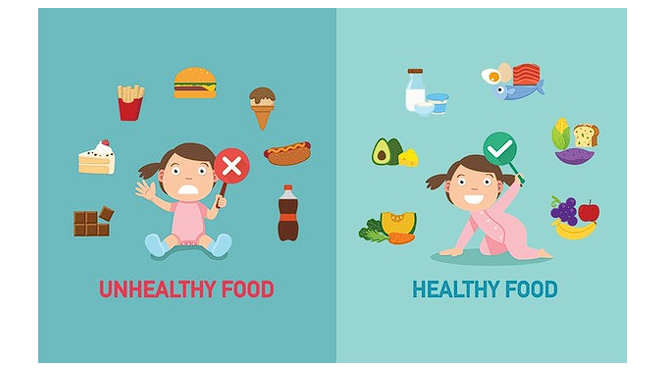
Foods to Minimize or Avoid:
- Heavy and Hard-to-Digest Foods:
Fried items, oily foods, bakery products. - Sweet and Salty Foods in Excess:
Especially those made with processed sugar and salt. - Leftover and Reheated Foods:
Freshly prepared food is ideal. Leftovers can lead to food poisoning in summer due to faster spoilage.
Practical Note: Traditional wisdom suggests eating freshly cooked meals. Avoiding stored and reheated food helps reduce the risk of infections and digestive problems.
Building a Summer-Friendly Diet
Maintaining good health in summer is about more than just hydration. It also means focusing on foods that:
- Are rich in fiber
- Provide complex carbohydrates
- Include high biological value (HBV) proteins
Fiber and Complex Carbohydrates
Opt for grains and millets that are lighter and easier to digest compared to wheat.
Recommended Substitutes:
- Barley: Cooling and light on digestion.
- Millets: Such as proso millet, barnyard millet.
- Legumes: Mung beans and lentils (in moderation).
These foods promote gut health, maintain energy levels, and help the body manage heat efficiently.
Incorporating Millets and Lentils for Summer Nutrition
Benefits of Millets in Summer Diet
Millets like little millet, foxtail millet, barnyard millet, and proso millet have been valued in Naturopathy and traditional diets for their cooling properties.
Key Advantages:
- Cooling Effect: Helps regulate body temperature.
- Rich in Fiber: Supports digestion and helps prevent constipation.
- Gluten-Free: Suitable for individuals with gluten intolerance.
- High in Minerals: Good source of calcium, magnesium, and iron.
Ways to Include Millets:
- Boiled with light seasoning and salt.
- Prepared as Java (thin porridge-like dish similar to Ragi Java).
- Eaten with vegetable curries as a solid meal.
Choosing the Right Lentils
Types of Lentils Suitable for Summer:
- Red Lentils (Masoor Dal)
- Yellow Lentils (Moong Dal, Toor Dal)
- Green Lentils (Green Gram)
These lentils are:
- Easily Digestible: Lighter on the stomach compared to heavier pulses.
- Protein-Rich: Provides high biological value protein, especially important for children, elderly, and vegetarians.
Note: For children, light dal soups made from these lentils can maintain protein levels without taxing the digestive system.
Caution with Heavy Lentils
Some lentils, particularly heavier varieties, may not be advisable for:
- People with Joint Pain or Gout:
High uric acid levels can worsen with heavy lentils. - Elderly Individuals:
They may face difficulty digesting high-protein lentils leading to discomfort.
Naturopathy Advice:
- Avoid overconsumption of acidic and heavy pulses.
- Prefer lighter dals, especially in powdered or Java form.
Herbal and Spice Support for Summer Health

Recommended Herbs and Spices:
- Dried Ginger Powder
- Black Pepper
- Cumin Seeds
- Cardamom
Health Benefits:
- Improves Digestion: Especially in humid and hot climates where digestion weakens.
- Regulates Body Heat: Some spices like cumin help balance internal heat.
- Boosts Immunity: Black pepper and ginger support immune function even in hot weather.
Practical Example of a Summer-Friendly Meal
Breakfast:
- Millet Java with a pinch of salt or mild spices.
Lunch:
- Barnyard millet with vegetable curry and light dal soup.
- Fresh cucumber or mint chutney.
Evening:
- Herbal tea made from cumin, ginger, and cardamom.
Dinner:
- Light lentil soup with steamed vegetables and foxtail millet.
Enhancing Summer Health with Smart Food and Hydration Practices
Herbs and Spices for Balanced Hydration
Adding natural spices and herbs to your summer drinks and meals can improve digestion, enhance taste, and boost immunity.
Recommended Additions:
- Dry Ginger Powder
- Black Pepper
- Cumin Seeds
- Cardamom
- Saffron
Instead of consuming plain buttermilk or water, adding these herbs helps:
- Avoid overhydration-related issues like dizziness and fatigue.
- Support better immunity and digestion.
Buttermilk: The Ideal Summer Beverage
Why Buttermilk Works:
Buttermilk is lighter than curd, making it easier to digest and more hydrating.
How to Prepare Refreshing Buttermilk:
- Mix 1 tablespoon (approximately 10 grams) of curd with 150 ml of water.
- Adjust fat content depending on health goals:
- Use whole fat curd for underweight individuals.
- Use toned/slim milk curd for those aiming for weight loss.
Tip: Add dry ginger powder, black pepper, or cumin for extra benefits without adding salt or sugar.
Additional Summer Fluid Options
Sugarcane Juice

- Excellent natural energy drink.
- Supports hydration and quick recovery from low blood sugar (hypoglycemia).
- Particularly useful for busy individuals skipping meals.
Coconut Water
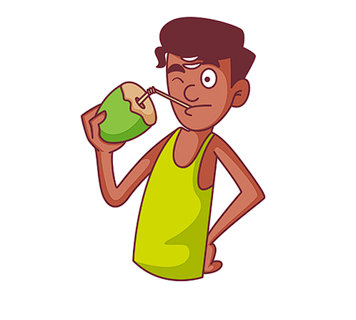
- Rich in electrolytes.
- Natural cooling effect.
Fresh Fruit and Vegetable Juices

- Best Options:
- Carrot juice
- Bottle gourd juice
- These juices help balance body heat while increasing essential vitamin intake.
Simple Summer Diet Example
Morning:
- Millet Java or light lentil soup
- Mint or coriander water
Midday:
- Buttermilk with dry ginger and cumin
- Fresh fruit slices (watermelon, cucumber)
Afternoon:
- Sugarcane juice or coconut water
Evening:
- Light dinner with millets and steamed vegetables
- Herbal tea with cardamom and ginger
Unlocking Summer Health with Hing (Asafoetida) and Wheatgrass
The Hidden Power of Hing (Asafoetida)
Hing, also known as asafoetida, is not just a flavor enhancer in Indian cooking—it holds significant summer health benefits:
- Balances pH Levels: Hing helps maintain the body’s acid-alkaline balance, supporting overall health.
- Improves Digestion: It’s known for reducing bloating, indigestion, and conditions like Irritable Bowel Syndrome (IBS).
- Stomach Cleanser: Helps detoxify the stomach, especially beneficial during hot months when digestion tends to slow.
How to Use Hing:
- Add a pinch of hing while tempering curries or dals.
- Consume small balls made from hing and jaggery as a natural digestive aid.
- Some traditions recommend drinking hing-infused water or adding it to rice dishes for consistent intake.
Summer Superfood: Wheatgrass
Wheatgrass stands out as another powerful supplement for summer wellness:
- Rich in Chlorophyll: Acts as a natural detoxifier.
- Boosts Energy: Especially useful when appetite and food intake drop due to heat.
- Alkalizes the Body: Balances acidity caused by heat or heavy foods.
How to Consume Wheatgrass:
- Mix 1 tablespoon of wheatgrass powder in warm water to create a tea-like drink.
- Replace your morning tea or coffee with fresh wheatgrass juice for better hydration and nourishment.
- Ideal for those avoiding caffeinated beverages.
Smart Beverage Swaps for Summer
Instead of hot, dehydrating drinks like tea, coffee, or alcohol, Naturopathy recommends:
- Wheatgrass Green Tea: As described above.
- Pandan (Panda) Drinks: While not universally available, pandan-infused beverages offer antioxidant benefits and help cool the body.
- Buttermilk with Herbs: Add spices like dry ginger, cumin, and black pepper instead of salt or sugar.
Practical Summer Routine Example
Morning:
- Hing-infused warm water or wheatgrass tea.
- Light breakfast with millets and lentils.
Midday:
- Buttermilk with spices.
- Fresh fruit like watermelon or cucumber.
Afternoon:
- Sugarcane juice or pandan drink if available.
Evening:
- Light dinner with millets, steamed vegetables, and lentils.
Cooling Herbs, Superfoods, and Summer Health Tips
Natural Cooling Drinks and Antioxidant Boosters
Along with wheatgrass and hing, several natural herbs and drinks play a vital role in protecting the body from heat-related health issues:
- Pandan (also referred to as panda): A herbal drink known for its rich antioxidant properties. It typically includes mint, cardamom, lemongrass, and cinnamon leaves. Pandan drinks help cool the body, reduce heat stroke risk, and support detoxification.
- Alfalfa Powder: High in calcium and nutrients, alfalfa powder can be added to juices or smoothies for added health benefits.
- Aloe Vera Juice: A widely recommended summer drink that aids detoxification, improves digestion, and keeps the body hydrated and cool.
Practical Summer Health Conclusion
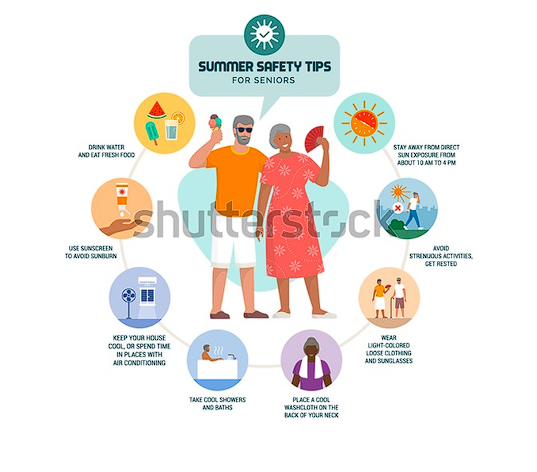
Incorporating these cooling foods, drinks, and spices into your daily routine can help maintain hydration, improve digestion, and support overall wellness during hot weather. While these remedies suit most individuals, it’s important to monitor personal health conditions.
For example:
- If someone already experiences summer-related illnesses such as heat stroke or dehydration, additional medical care may be necessary.
- General prevention is always better than treatment—adopting these habits before peak summer can reduce the risk of common health issues.
Common Summer Health Problems: An Overview
As temperatures rise, some health challenges become especially common. The article now shifts focus to understanding and managing these issues effectively. Here’s a preview of 10 typical problems discussed:
- Heat Stroke (Hydrothermia):
- Common among outdoor workers like farmers, laborers, and sales personnel.
- Results from prolonged exposure to high temperatures and direct sun.
- Symptoms include dizziness, headaches, rapid heartbeat, nausea, and fainting.
2–10: Other health issues such as dehydration, sunburn, food poisoning, skin infections, digestive problems, fatigue, headaches, eye irritations, and electrolyte imbalances are mentioned in the next sections of your source material.
Understanding and Managing Heat Stroke During Summer
Who Is at Risk?
Heat stroke—also known as hyperthermia—is a serious health condition especially prevalent among:
- Outdoor workers such as farmers, laborers, and marketing personnel
- People spending long hours outdoors for shopping, events, or travel
- Elderly individuals and young children, who have less efficient body temperature regulation
Causes of Heat Stroke
The primary cause is prolonged exposure to high temperatures combined with physical activity. During summer, people may unintentionally stay outside for extended periods without adequate hydration or protection.
Common Symptoms of Heat Stroke
- Headache
- Dizziness
- Weakness and fatigue
- Decreased or dark-colored urine
- Nausea and vomiting (in more serious cases)
If these symptoms appear, immediate attention is required. Mild cases may be managed at home, but severe symptoms—especially in vulnerable populations—require hospitalization.
Smart Hydration Tips to Prevent Heat Stroke
While hydration is essential, drinking excessive amounts of water in a short time can also cause health issues such as dizziness or vomiting due to electrolyte imbalance.
Balanced Hydration Strategy:
- Drink Water Before Going Outdoors: Especially before leaving home for afternoon errands or work.
- Avoid Continuous Over-Drinking: Sip small amounts of water at regular intervals instead of consuming large quantities at once.
- Complement Water with Hydrating Drinks: Use buttermilk, lemon water, sugarcane juice, or coconut water for hydration plus electrolyte balance.
- Monitor Your Body: Watch for signs like dizziness or dark urine and hydrate accordingly.
- Timing Matters: Avoid going out during peak heat hours (typically 12:00 p.m. to 3:00 p.m.) whenever possible.
Maintaining Body Temperature
The body naturally regulates its internal temperature through sweating and other mechanisms. Over-hydrating can disrupt this balance, leading to hyponatremia—a dangerous drop in sodium levels.
Practical Prevention Checklist:
- Wear light-colored, loose-fitting cotton clothes
- Use protective gear like hats or umbrellas
- Plan outdoor activities early in the morning or after sunset
- Prioritize hydration but avoid excessive water intake at once
- Recognize heat stroke symptoms early and act quickly
Summer Health Essentials: Preventing Heat Stroke and Food Poisoning
1. Hydration Best Practices for Summer
During hot months, maintaining hydration without overdoing it is key. Here are expert-recommended strategies:
- Drink Before Going Out: Hydrate before exposure to the sun, especially between 12 p.m. and 4 p.m.
- Drink When Thirsty: Listen to your body’s natural signals rather than forcing excessive water intake.
- Replenish Electrolytes: Use drinks like buttermilk, coconut water, watermelon juice, or add lemon and black salt to water. Excess plain water can flush out essential electrolytes.
- Limit Alcohol and Caffeine: These can dehydrate the body and increase heat stroke risk.
2. Smart Food Practices During Summer
To avoid heat-related digestive issues:
- Prioritize Fresh Food: Eat food freshly prepared within 2–3 hours. Avoid reheated or refrigerated leftovers kept for several days.
- Avoid “Dead Food”: Leftover, repeatedly reheated, or stale food can harbor harmful bacteria.
Home Remedies for Heat Stroke
- Raw Mango Drinks: Made from cooked or juiced raw mango to cool the body.
- Buttermilk: Natural coolant aiding digestion and hydration.
- Coconut Water & Fennel Juice: Refreshing and electrolyte-rich.
- Onion Juice: Applying onion juice to the chest, stomach, or nose can help prevent nosebleeds and heat stroke.
If someone experiences high body temperature, dizziness, or rapid pulse, move them to a cooler place, apply cold compresses, and seek immediate medical help.
3. Food Poisoning in Summer
Food poisoning becomes more common due to:
- Eating out during vacations
- Poor hygiene and improper food storage
- Increased bacterial growth in heat
Causes:
- Contaminated water and food
- Poorly handled or stored homemade food
- Unwashed hands or kitchen tools
Common Symptoms:
- Abdominal pain and cramps
- Nausea and vomiting
- Bloating and indigestion
- Loss of appetite
Prevention Tips:
- Wash Hands and Utensils: Basic hygiene reduces risk.
- Consume Fresh Food: Avoid leftovers and ensure food is well-cooked.
- Monitor Water Sources: Especially while traveling, drink only purified or bottled water.
Understanding and Preventing Food Poisoning During Summer
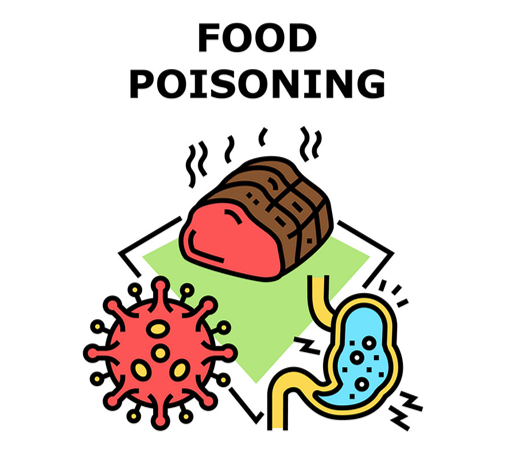
Why Food Poisoning Is Common in Summer
During summer, heat accelerates the growth of bacteria, viruses, and fungi, making food spoil faster and increasing the risk of foodborne illnesses. Factors contributing to food poisoning include:
- Eating street or outside food
- Consuming contaminated water
- Improper food handling and hygiene practices at home
Common Symptoms of Food Poisoning
Food poisoning symptoms can appear shortly after consuming contaminated food or drink. Key signs include:
- Abdominal Pain: Ranging from mild cramping to severe pain.
- Nausea and Vomiting: Often follows shortly after eating spoiled food.
- Diarrhea: Loose, watery stools leading to dehydration if unchecked.
- Fever: The body’s natural response to fight infection, often accompanied by chills and sweating.
- Constipation or Feeling of Fullness: Despite not eating much, bloating and discomfort can occur.
When to Seek Medical Attention
Immediate medical attention is necessary if:
- Symptoms are severe or prolonged
- Dehydration signs appear (dry mouth, reduced urine output)
- The patient is a child, elderly, or has a compromised immune system
How to Prevent Food Poisoning
To minimize risk, follow these simple but effective steps:
Hygiene Practices
- Wash hands thoroughly before preparing and eating food.
- Sanitize kitchen utensils, cutting boards, and surfaces regularly.
Cooking and Food Preparation
- Cook food thoroughly, especially eggs, meats, and seafood.
- Boil vegetables before consumption rather than eating them raw.
- Avoid consuming hard-boiled but undercooked or raw foods.
Storage Guidelines
- Avoid keeping food in the refrigerator for too many days.
- Do not reheat the same food multiple times.
- Consume food within 2–3 hours of preparation whenever possible.
Treating Food Poisoning at Home
If food poisoning occurs, basic care steps include:
- Hydration: Drink electrolyte-rich fluids such as ORS (oral rehydration solution), coconut water, and lemon water with black salt.
- Rest: Allow the body time to recover naturally.
- Simple Diet: Stick to light, bland foods like boiled rice, bananas, and toast.
Home Remedies for Food Poisoning Support
- Raw Mango Drinks: Aid digestion and cool the body.
- Buttermilk: Acts as a natural coolant and supports gut health.
- Coconut Water and Fennel Juice: Helps restore lost fluids and electrolytes.
- Onion Juice: Can be applied externally on the chest and nose to help reduce body heat, particularly useful if heat stroke symptoms overlap.
Practical Prevention Tips for Food Poisoning
- Proper Washing and Cleaning
- Always wash fruits and vegetables thoroughly before consumption.
- Soak produce in clean water for 20–30 minutes to help remove pesticides and contaminants.
- Personal Hygiene
- Wash hands regularly—especially before eating or preparing food.
- Ensure hands are dried properly after washing to prevent bacterial growth.
- Avoid Eating Leftovers
- Freshly cooked food carries a lower risk of contamination compared to food left out or improperly stored.
- Reheat only once, avoid reheating the same food multiple times.
At-Home Treatment for Food Poisoning
- Stay Hydrated
- Drink plenty of fluids to combat dehydration caused by vomiting and diarrhea.
- Prepare a homemade oral rehydration solution:
- 1 liter of warm water
- 1 teaspoon salt
- 6 teaspoons sugar
- Electrolyte drinks are useful but homemade solutions work well too.
- Rest
- Allow your body time to recover fully.
- Avoid intense physical activities until symptoms have completely subsided.
- Dietary Adjustments During Recovery
- Start with Liquids: Begin with water, clear broths, and electrolyte solutions.
- Bland Foods: Gradually add foods like crackers, toast, plain rice, and bananas.
- Soft Diet: Once stable, move to soft, easily digestible foods such as khichdi or porridge.
- Normal Diet: Only return to your regular meals once fully recovered.
- Avoid spicy, oily, or heavy foods until the stomach has completely settled.
What Is Dehydration?
Dehydration occurs when your body loses more fluids than it takes in, causing an imbalance in essential electrolytes and affecting normal bodily functions.
While it’s common during summer due to heat and sweating, dehydration can happen year-round. It’s especially risky for:
- Children: They may not recognize thirst or communicate it.
- Elderly people: They may have a reduced sense of thirst or health conditions affecting fluid balance.
Common Causes of Dehydration
- Excessive sweating from heat or exercise
- Vomiting and diarrhea, especially during food poisoning
- Fever
- Insufficient fluid intake
- Conditions like diabetes
Symptoms of Dehydration
Recognizing dehydration early is critical:
- Dry mouth and tongue
- Feeling thirsty
- Dark yellow urine or reduced urination
- Fatigue or weakness
- Dizziness or lightheadedness
- Rapid heartbeat
For severe dehydration:
- Confusion
- Fainting
- No urination for several hours
How to Prevent Dehydration
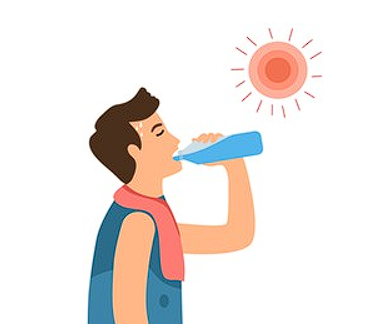
- Regular Fluid Intake
- Drink small amounts of water consistently throughout the day rather than large amounts all at once.
- Adults should aim for at least 2–3 liters per day, more in hot weather.
- Electrolyte Balance
- Balance plain water with drinks containing electrolytes, such as coconut water, lemon water with salt and sugar, and ORS (oral rehydration solutions).
- Monitor Children and Elderly
- Remind them regularly to drink water.
- Educate children on recognizing signs of thirst.
- Appropriate Foods
- Include hydrating foods like watermelon, cucumber, oranges, and buttermilk.
- Avoid Dehydrating Substances
- Limit intake of alcohol and caffeinated beverages, which can contribute to fluid loss.
First Aid for Dehydration
If someone shows signs of moderate dehydration:
- Move them to a cool, shaded place.
- Offer small sips of water or ORS.
- Avoid giving large amounts of fluids quickly as it may cause nausea.
- If symptoms worsen, seek medical help immediately.
Recognizing the Symptoms of Dehydration
As emphasized earlier, dehydration is more than just feeling thirsty. Here’s a clear list of commonly observed signs:
- Dry Mouth: A persistent feeling of dryness indicates fluid imbalance.
- Dark Yellow Urine: Light-colored urine generally signals good hydration; dark urine suggests otherwise.
- Fatigue and Weakness: A dehydrated body struggles to maintain energy levels.
- Dizziness or Lightheadedness: Reduced blood volume affects brain function, leading to balance issues.
- Reduced Urination: Urinating fewer times a day than usual is a warning.
When these signs appear, especially in children and the elderly, immediate action is necessary to prevent complications.
Simple Daily Practices to Avoid Dehydration
- Drink at Regular Intervals:
- Instead of waiting to feel thirsty, make a habit of drinking water at set times throughout the day.
- Opt for Hydrating Foods:
- Include fruits like watermelon, oranges, cucumbers, and tomatoes in your diet.
- Monitor Urine Color:
- Teach children and family members how to notice this basic sign of hydration.
- Avoid Drinks That Dehydrate:
- Minimize intake of:
- Sugary sodas
- Caffeinated beverages like coffee and tea
- Alcohol
- Minimize intake of:
- Community Awareness:
- In areas with limited access to clean drinking water, promoting community-level solutions such as:
- Installing water purification systems
- Encouraging rainwater harvesting
- Spreading awareness about water conservation
- In areas with limited access to clean drinking water, promoting community-level solutions such as:
Key Takeaways from the Provided Transcript (Timestamps 851–900)
1. Dehydration and Rapid Heartbeats
- Dehydration can increase heart rate, especially risky for individuals with hypertension or heart conditions.
- Symptoms include rapid heartbeats (tachycardia), breathlessness, and angina-like chest pain.
- If drinking water doesn’t help alleviate these symptoms, professional medical attention is advised.
2. Additional Dehydration Symptoms
- Breathlessness: May occur alongside rapid heartbeats.
- Headaches: Common with low fluid intake.
- Dry Skin and Rashes: Lack of hydration can lead to skin issues, especially in hot weather.
3. Rehydration Practices
- Plain Water: Always the best option.
- Alternative Fluids: Coconut water, buttermilk, lemon water—these provide hydration and electrolytes.
- Cultural Note: In India, consuming fruits like papaya and mangoes alongside meals is a traditional practice but may not always be ideal for hydration balance.
4. Traditional Meal Habits and Hydration Awareness
- Some communities traditionally consume rice with salt, water, mango, or papaya.
- These meals were nutrient-rich and helped with hydration in olden days when food availability was simpler and tailored to climate and work habits.
- Today, awareness about balanced meals and hydration is broader, so people are encouraged to combine tradition with modern health guidance.
Traditional Food Habits and Modern-Day Eating Patterns: What to Know
Evolution of Food Habits
Historically, many Indian communities consumed simple meals like brown rice with mango or papaya. This practice made sense when:
- Diets were high in fiber from bran and whole grains.
- People engaged in physically demanding activities throughout the day.
- Access to processed foods like bakery items was minimal.
For them, mango and papaya provided essential nutrients and energy, supporting an active lifestyle.
Why These Practices May Not Fit Modern Lifestyles
Today’s diets are different:
- Meals often already contain carbohydrates and sugars.
- People’s daily activities tend to be less physically intensive.
- Combining fruits like papaya and mango with meals now may lead to:
- Increased calorie intake.
- Weight gain.
- Higher sugar consumption.
Because of this, modern nutrition advice suggests adjusting fruit consumption habits.
When and How to Eat Fruits for Maximum Benefit
- Timing Matters
- Best Times:
- Breakfast (Exclusively fruits): Helps with easier digestion and better nutrient absorption.
- Mid-afternoon or Evening Snack (Around 4–5 PM): Acts as a healthy alternative to tea or coffee.
- Avoid:
- Eating fruits directly with cooked meals (like lunch or dinner).
- Combining fruits and heavy foods, which can hinder digestion and contribute to excess carbohydrate intake.
- Why Avoid Mixing Fruits with Cooked Food:
- Mixing fruits with cooked food can slow digestion.
- It may lead to fermentation in the stomach, bloating, or discomfort.
- Separating fruit intake ensures better nutrient absorption and digestion efficiency.
Practical Advice for Modern Eating
- Eat fruits on an empty stomach whenever possible.
- Avoid combining fruits with grains, dairy, or meat in the same meal.
- Choose high-fiber fruits like papaya and mango during active days but in moderation.
- For hydration and refreshment, opt for fruits as snacks instead of sugary or caffeinated beverages.
Smart Eating Habits for Better Digestion and Hydration in Modern Life
1. The Right Way to Consume Fruits
Separate Fruit Consumption:
- Avoid eating fruits with cooked meals. Give at least three hours gap between regular meals and fruit intake.
- Eating one type of fruit at a time (e.g., just papaya or just apple) ensures better digestion and maximum nutrient absorption.
- Mixing too many fruits or combining fruits with heavy meals can burden the digestive system and lead to bloating or nutrient loss.
Best Times for Fruits:
- Morning (Empty Stomach): Ideal for better absorption of vitamins and minerals.
- Evening Snacks (Around 4–5 PM): As a healthy, light alternative to tea, coffee, or processed snacks.
Note: Fruits should be enjoyed occasionally with meals only for taste, not as a regular habit.
2. Best Vegetables for Hydration and Summer Health
Vegetables rich in water content and fiber help maintain hydration and prevent heat-related issues. Recommended options include:
- Bottle Gourd (Lauki)
- Snake Gourd
- Carrot
- Bitter Gourd (Beru)
- Spinach
- Capsicum (Bell Pepper)
Cooking Tips:
- Steam or lightly boil vegetables with minimal oil.
- Avoid frying; instead, season with just salt and pepper.
3. Homemade Remedies for Dehydration and Heat Issues
Lemon Water with Rock Salt and Raw Sugar
A simple yet effective traditional remedy.
Preparation:
- 2 tablespoons lemon juice
- A pinch of rock salt
- 2 tablespoons raw sugar
- 1 glass of warm water
Usage:
- Drink this mixture 3–4 times a day during summer.
- Helps balance electrolytes and maintain hydration.
Why This Works:
- Lemon: Provides vitamin C and supports electrolyte balance.
- Rock Salt: Adds essential minerals lost through sweat.
- Raw Sugar: Offers quick energy without overwhelming the body.
To maintain everyday health, certain simple habits can make a significant difference. First, fruit consumption is most effective when fruits are eaten separately from cooked meals. This maximizes vitamin absorption and prevents digestion issues. Second, choosing the right vegetables plays a vital role in hydration and digestion—opt for water-rich, fiber-rich vegetables like bottle gourd, snake gourd, carrot, and spinach, especially during hot seasons. Third, practicing regular hydration remedies such as drinking lemon water mixed with rock salt and raw sugar helps maintain the body’s electrolyte balance and prevents dehydration. Finally, the cooking method is also important: steaming or boiling vegetables with minimal seasoning preserves their nutrients far better than frying. By following these simple yet impactful practices, one can support better digestion, hydration, and overall wellness throughout the year.
Summer Skin Rashes: Causes, Prevention, and Remedies
Skin rashes are common during the summer due to excessive sweating, poor hygiene, and wearing tight or dark-colored clothes. These rashes often appear as red patches, itching, or burning sensations on the skin.
Common Causes:
- Excessive sweating and friction
- Wearing dark or tight-fitting clothes, trapping heat and moisture
- Poor hygiene, especially after outdoor activity
- Use of harsh soaps or cosmetic products
Prevention Tips:
- Wear loose-fitting, light-colored cotton clothes to allow skin to breathe.
- Bathe regularly and keep skin clean and dry.
- Use talcum powder in high-friction areas to absorb sweat.
- Avoid sun exposure between 10:00 AM and 5:00 PM when UV rays are strongest.
- Use protective clothing like hand gloves and full sleeves if needed.
Home Remedies:
- Apply aloe vera gel or coconut oil to soothe irritated skin and reduce inflammation.
- Take cool baths with oatmeal or baking soda twice a week to relieve itching.
- Avoid harsh soaps and lotions that can worsen irritation.
- Suck on fennel seeds, lemon/orange candies, or ginger candy to help stay hydrated and cool internally.
When to See a Doctor:
- If rashes become severe, persistent, or are accompanied by fever and swelling.
- Doctors may prescribe creams or medications to relieve symptoms and treat underlying causes.
Alkaline Diet for Skin Health and Summer Wellness
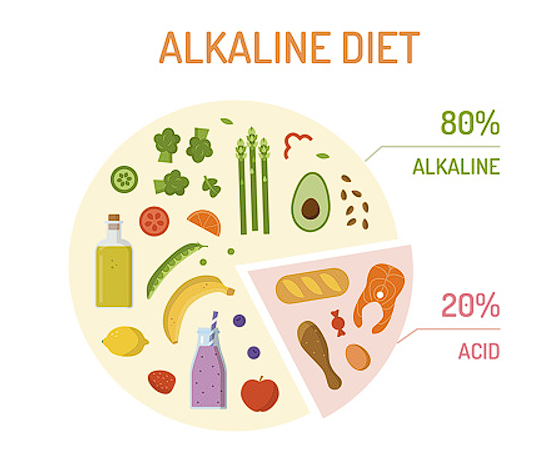
Maintaining an alkaline diet helps the body stay balanced, especially during hot summer months. It can reduce the chances of skin rashes, acidity, and improve metabolism.
Why an Alkaline Diet?
- Heat Management: Reduces body heat and susceptibility to rashes.
- Improved Digestion: Less spicy and packaged foods help reduce acidity and bloating.
- Better Metabolism: Supports weight management and smoother digestion.
Home Remedies for Skin Rashes (Recap)
- Aloe Vera Gel: Naturally cools and soothes skin irritation.
- Coconut Oil: Moisturizes skin, especially in friction-prone areas.
- Oatmeal or Baking Soda Baths: Reduces itchiness and soothes inflammation.
- Cool Showers: Maintain skin hygiene and prevent sweat buildup.
- Avoid Harsh Cosmetics: Use mild, natural soaps and skincare products.
Skin Care Preventive Measures:
- Wear Loose, Light-Colored Cotton Clothes: Allows skin to breathe and prevents sweat buildup.
- Limit Sun Exposure: Avoid stepping out between 10 AM to 5 PM. Use hats, umbrellas, or full sleeves.
- Stay Hydrated: Drink plenty of water and use natural hydration aids like lemon water with rock salt.
- Use Natural Spices in Diet: Maintain an alkaline diet by using spices like green chilies, cumin, and ginger instead of packaged masalas.
Practical Skin Care and Sun Protection Tips for Everyday Health
During summer, skin faces increased challenges such as rashes, dryness, infections, and sun-related damage. The key to maintaining skin health is consistent care using simple, non-chemical methods. Below is a practical breakdown of essential steps:
- Gentle Cleansing Instead of Harsh Soaps
Many people unknowingly use harsh soaps that strip away natural skin oils, leading to dryness and irritation. Instead:
- Use mild, skin-type-specific cleansers.
- For oily skin, opt for oil-free formulas.
- For dry or combination skin, choose hydrating cleansers.
- Moisturizing After Bathing
The most effective time to moisturize is right after bathing, while your skin is still slightly damp.
- Choose a moisturizer that is non-comedogenic (won’t clog pores).
- Select formulas suitable for your skin type—there’s no one-size-fits-all.
- Sun Protection (SPF Selection Tips)
Sun exposure is one of the primary causes of skin damage. However, using unsuitable sunscreen can also worsen conditions like acne. Key guidelines:
- Use SPF products suited to your age, gender, skin color, and concerns (acne, pigmentation).
- Consult a dermatologist for customized recommendations.
- Apply sunscreen at least 15–20 minutes before stepping out in the sun.
- Avoiding Harsh Chemicals
Many over-the-counter skin products contain harsh chemicals.
- Avoid products with strong fragrances, parabens, sulfates, or artificial colors.
- Opt for natural or organic skincare products whenever possible.
- When to See a Doctor
If you experience:
- Severe, persistent rashes or itching.
- Fever along with skin issues.
- Painful swelling or infection.
It’s advisable to consult a dermatologist immediately.
Understanding Summer-Related Health Concern: Hepatitis Awareness
Hepatitis is inflammation of the liver, which may not always present with severe symptoms immediately but can become a serious health concern if ignored. It is especially relevant during hot weather when food and water hygiene may slip.
Common Signs to Watch:
- Fatigue and weakness.
- Yellowing of skin or eyes (jaundice).
- Nausea or vomiting.
Prevention Measures:
- Drink clean, filtered water.
- Avoid raw or unhygienic street foods.
- Maintain a healthy, balanced diet to support liver function.
Hepatitis A (Jaundice): Understanding, Prevention, and Practical Care
What Is Hepatitis A?
Hepatitis A, commonly recognized as jaundice, is a liver infection caused by the Hepatitis A virus. It affects both children and adults. The key issue in Hepatitis A is inflammation of the liver, which leads to excessive bilirubin (a yellow pigment from breaking down red blood cells) in the body.
Common Symptoms of Hepatitis A:
- Yellowing of the eyes and skin (jaundice)
- Fever
- Loss of appetite
- Diarrhea
- Fatigue
- Dark-colored urine
- Nausea and vomiting
How Hepatitis A Affects the Body:
When the liver becomes inflamed, its ability to filter toxins and process nutrients is impaired. This leads to:
- Low immunity
- Fatigue
- General weakness
- Increased risk of other infections
Natural Home Remedies for Hepatitis Support:
- Fresh Fruits
Fresh fruits like papaya, pomegranate, apples, and oranges help cleanse the liver and boost vitamin intake. Avoid packaged juices or preserved fruits.
- Boiled Mung Beans (Green Gram)
Boiled mung beans are light on digestion and rich in protein. Here’s how to prepare them:
- Soak mung beans overnight.
- Boil until soft.
- Add minimal salt and spices.
This dish provides nutrition without overloading the liver.
Foods to Avoid:
- Deep-fried snacks
- Bakery items with preservatives
- Alcohol
- Heavy, spicy, or oily foods
Natural Home Remedies and Dietary Care for Hepatitis A (Jaundice) Recovery
Hepatitis A, commonly called jaundice, is a liver infection caused by the Hepatitis A virus. While often manageable with home care, it does require attention to diet, hydration, and rest. Below are evidence-informed natural remedies and lifestyle tips that may support recovery.
Core Symptoms of Hepatitis A:
- Yellowing of eyes and skin
- Fatigue and weakness
- Loss of appetite
- Dark-colored urine
- Nausea and vomiting
- Low immunity
What Is Hepatitis A (Jaundice)?
- It is a liver infection caused by the Hepatitis A virus.
- It affects both adults and children.
- Common signs:
- Yellow skin and eyes
- Loss of appetite
- Dark urine
- Weakness and fatigue
Why Care Is Important:
The liver helps your body filter toxins and digest food. During Hepatitis A, your liver is inflamed and works slower, so you must avoid putting extra strain on it.
Main Remedies and Tips Discussed:
1 Dietary Habits:
- Avoid oily, spicy, and packaged foods.
- Eat fresh fruits, vegetables, and mung beans (green gram).
- Stay Hydrated — drink plenty of water and healthy juices.
2 Natural Juices That Help:
- Amla Juice (Indian Gooseberry) — Rich in Vitamin C.
- Sugarcane Juice — Helps maintain energy and liver function.
- Orange Juice — Helps people who lose appetite feel hungry again.
- Aloe Vera Juice — Soothes the liver.
- Wheatgrass Juice — Detoxifies and regenerates liver cells.
- Turmeric Milk or Juice — Natural anti-inflammatory.
3 Simple Home Remedy:
- Curd with Baking Soda (for digestion):
- Mix curd with a small pinch of baking soda.
- Drink on an empty stomach if suitable for your body.
- Not for everyone—people with sensitive digestion should avoid it.
Natural Liver-Supportive Drinks: Benefits Explained
When recovering from liver-related issues like Hepatitis A or simply wanting to maintain good liver health, incorporating specific natural drinks into your routine can provide essential nutrients and support liver function. Here’s how each of these drinks helps:
1 Amla (Indian Gooseberry) Juice:
Amla juice is naturally high in Vitamin C, a vital nutrient that strengthens the immune system and protects the liver from oxidative stress. Its antioxidant properties help the liver in detoxification and maintaining its overall health.
2 Sugarcane Juice:
Sugarcane juice is a cooling and hydrating drink rich in antioxidants. It supports liver detoxification and helps maintain hydration levels, especially important for those experiencing low energy and weakness during liver-related illnesses.
3 Orange Juice:
Besides being refreshing, orange juice is rich in Vitamin C. It is especially helpful for people suffering from low appetite, a common symptom during jaundice. Regular intake can help stimulate hunger and support overall energy levels.
4 Aloe Vera Juice:
Aloe vera juice has anti-inflammatory properties that help reduce liver inflammation. It promotes healing and regeneration of liver tissues, making it a helpful addition during recovery from liver stress or infection.
5 Wheatgrass Juice:
Known as a powerful natural detoxifier, wheatgrass juice aids in cleansing the liver and regenerating damaged liver cells. It is rich in chlorophyll, which helps remove toxins from the blood and supports liver function.
6 Turmeric Milk or Juice:
Turmeric contains curcumin, a compound recognized for its anti-inflammatory and liver-protective effects. Consuming turmeric in warm milk or as a juice can help reduce liver inflammation, promote healing, and prevent further damage.







